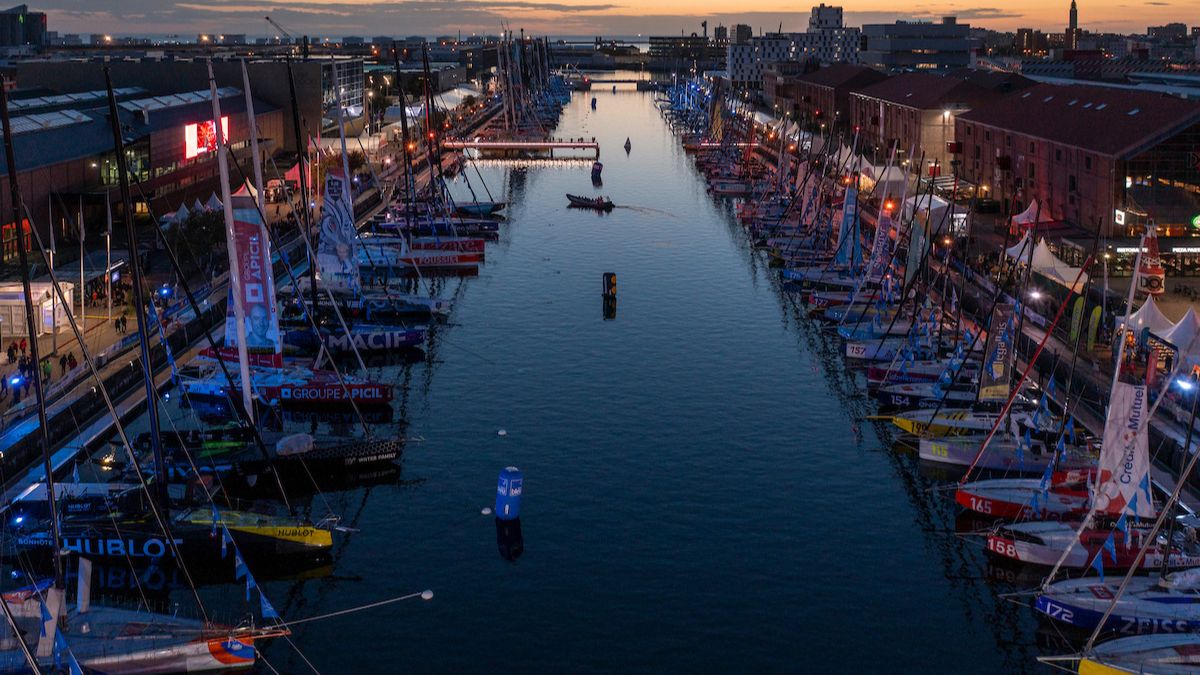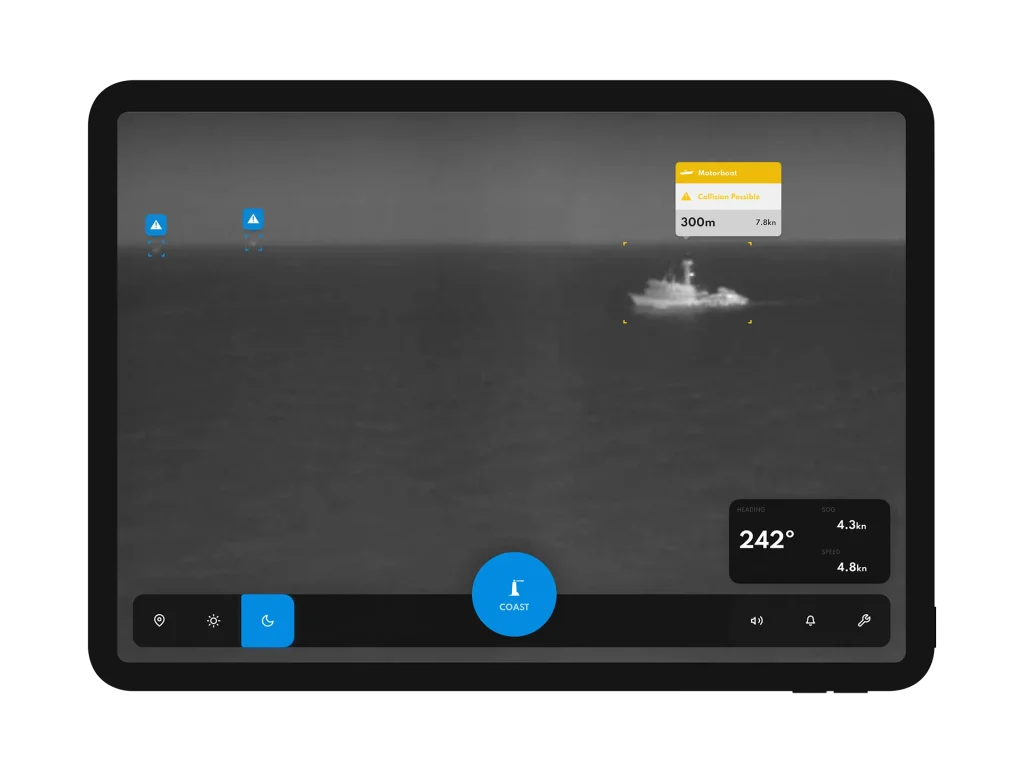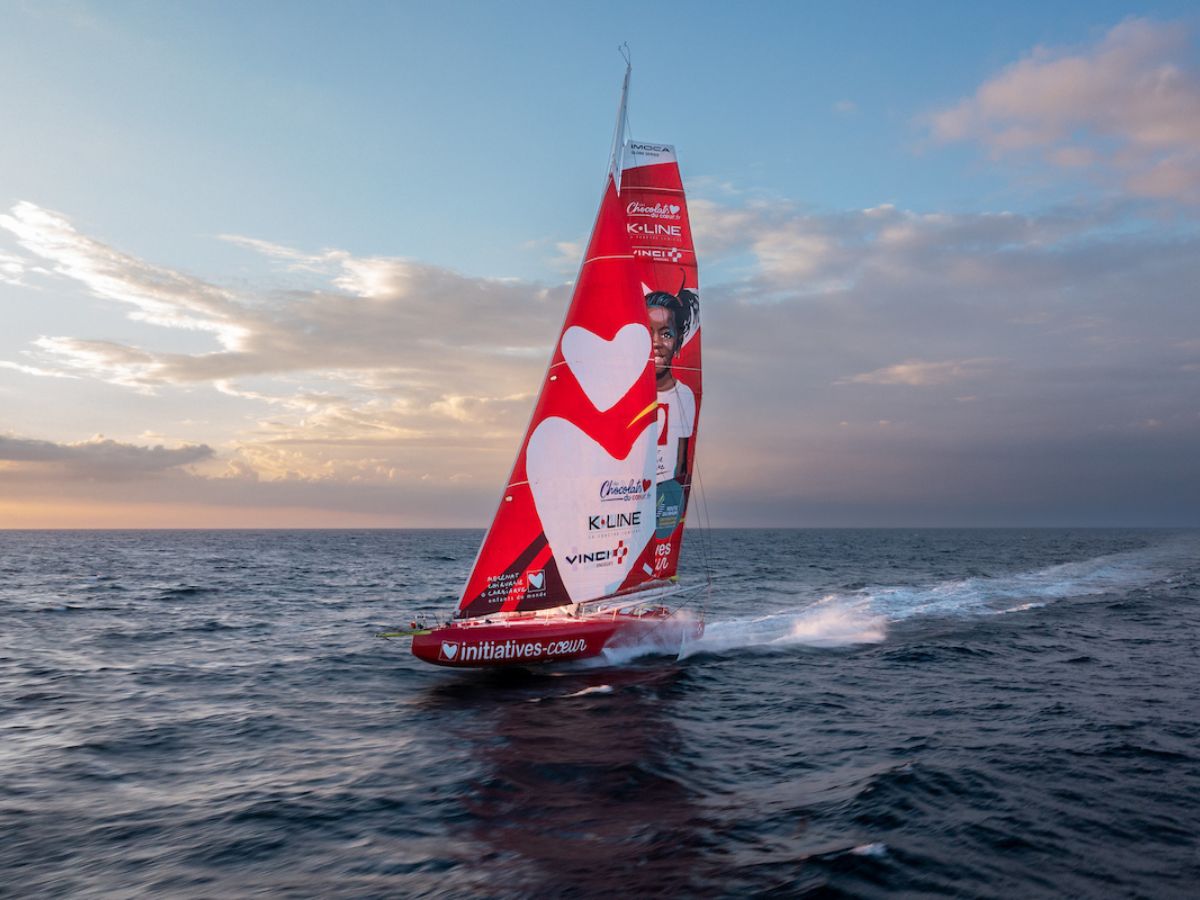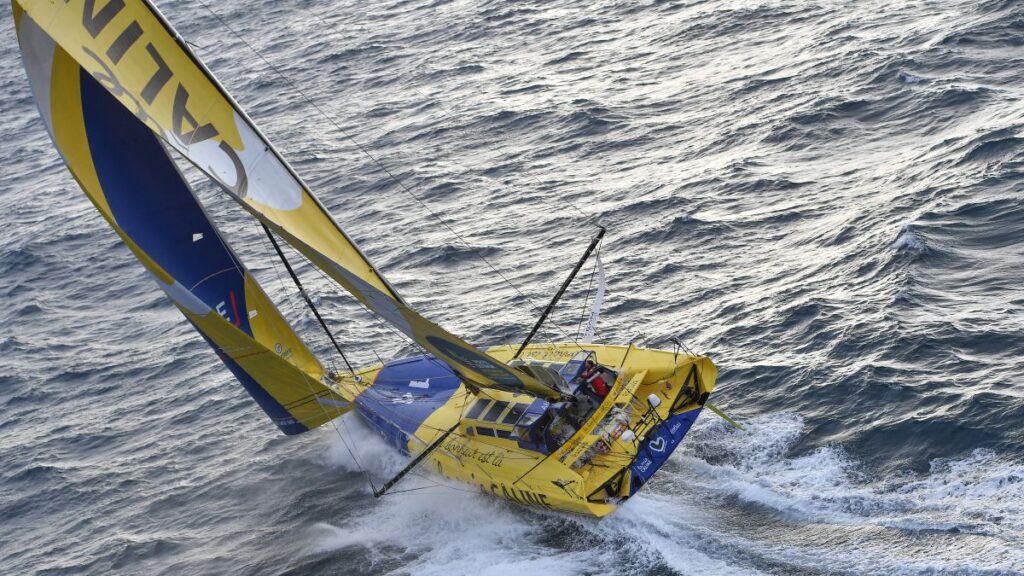Home » Collision Avoidance Systems on the Transat Jacques Vabre
They must first face the busiest shipping lanes in the world in the English Channel/La Manche and its powerful tides, followed by crossing the Bay of Biscay. With this comes the threat of collisions not just from shipping, plus pleasure and fishing boats, but other objects in the water, both identified and unidentified. These are made all the harder to spot by crews on the race as they are only two on board.
Electronic aids to prevent collisions at sea are nothing new. Radar is the most established technology having been used on pleasure boats since the 1970s.
Over the last 20 years, AIS vessel tracking has become standard on yachts across the globe. This allows the position of vessels to be displayed visually, superimposed over a radar image or routing software or in stand-alone computer software, even a phone app.
However, both systems have weaknesses – AIS is not infallible, and some vessels still don’t carry it or have it switched on. Radar works well in the right conditions but assumes that the set is properly tuned and powerful enough. It is not good at spotting small objects nor objects that are only just above the surface.

Enter SEA.AI collision systems, which uses additional technology to complement existing technology.
Conceived by Raphaël Biancale, SEA.AI utilizes visual and thermal imaging from a lightweight, masthead-mounted camera array. Its algorithm compares this data with a vast database of around 9 million objects, continuously growing since 2018. These objects include logs, containers, buoys, small vessels like fishing boats, and icebergs.
Visual and thermal images are compared with this database to identify floating object’s characteristics and then provide information on collision risk for the skipper to decide whether to take avoiding action or not. SEA.AI Competition can also be highly valuable for use in man overboard incidents, especially at night.
Given the importance of collision avoidance, not just the potential severity or even the life-threatening nature of such incidents, but the potentially profound effects on a racing yacht’s performance, use of SEA.AI is seen as vital by short-handed skippers competing in the Transat Jacques Vabre, especially in the bigger classes. It is fitted on all of the Ultims and more than half of the IMOCA fleet. Some are relying on it so much that they won’t leave the dock without it being switched on.

As Clarisse Crémer, skipper of the IMOCA L’Occitane En Provence says: “I’ve been using SEA.AI collision system since the 2020 Vendée Globe and I have it back on my new boat. I remember during my previous Vendee Globe when I was in the Indian Ocean, I came across a barrel of petrol – it wasn’t exactly in my way, but it was detected by SEA.AI even in quite big waves. I quickly came out to get a closer look. I could see passing by just next to the boat. I was relieved to see it wasn’t going to hit me, but also pleased that it had been spotted. […] I’m happy that it exists; it’s a great tool, and I hope it continues to improve in the months and years to come.”
Jack Bouttell about SEA.AI
Jack Bouttell agrees. Recently he won the Ocean Race as a crew member on 11th Hour Racing. This Saturday he will set off as co-skipper with Sam Davies on Initiatives Coeurs. He says of SEA.AI: “It’s a pretty important product for us. The speed at which these boats travel now, and the fact that the cockpit is fully enclosed are important factors for protection, but we don’t always have the best visibility. Any pre-warning we can get is a massive bonus. It seems there are more and more things floating in the ocean unfortunately, so anything to help us avoid that is a huge benefit.”

Alan Roura, skipper of the IMOCA Hublot adds: “I have used SEA.AI for two years. It was on my boat when I bought it from Alex Thompson. We had a really good experience with it on the Guyader Bermudes 1000 race miles at the beginning of the year: We were downwind, our AIS was not really working, and it started beeping 30m away from a big fishing boat. We just had time to change course and passed about ten meters away from it. If it hadn’t been on, we would have crashed into it. So, it works…”
Gérald Veniard, co-skipper to Arnaud Boissieres on the IMOCA La Mie Câline says: “The system is getting better and better. There’s a small alarm on the main screen in the cockpit that beeps softly, like a submarine echo. When it beeps, we check in front of the boat instantly because it could be anything- like a sailing boat or a fishing vessel – within 600-800m. It’s a helpful warning. We’re happy with any system that helps us avoid objects. We have multiple systems, including radar, AIS and SEA.AI at the top of the mast. The more systems and alarms we have, the less likely we are to collide with objects.”

Sébastien Marsset, skipper on the IMOCA Foussier confirms: “I have many memories of times when it was useful because it happens regularly. For example, when we come back from training with the Finistère ocean racing centre, we often sail past Le Guilvinec. There are a lot of fishing boats, boats of less than twelve metres. They don’t necessarily have an AIS. So we’ve sometimes seen boats thanks to SEA.AI. I still remember what Sam Davies told me along the African coast in the Jacques Vabre 2021, where they avoided a serious collision. Thanks to that, I’m very happy to have a boat equipped with it and to be able to rely on it.”
This Friday (28th April 2024), the Transat CIC will set sail from Lorient in the Western France to New York in the East Coast of the USA. This race will feature 33 IMOCA of which 20 are equipped with SEA.AI Machine Vision System.
SEA.AI demonstrated its machine vision at the Congressional Boating Caucus briefing on April 11, 2024, in Washington, D.C..
Baltic Yachts, a Pioneering Shipyard, integrates SEA.AI Machine Vision Technology to its Range of Innovative Options